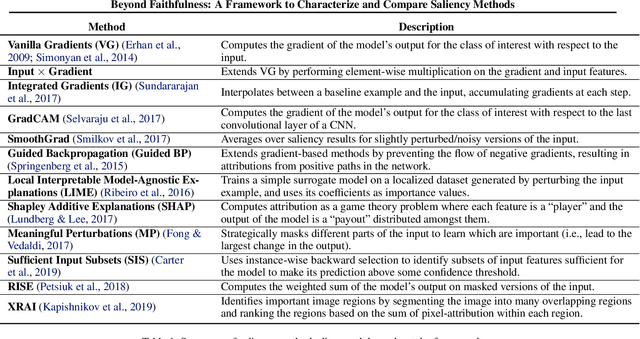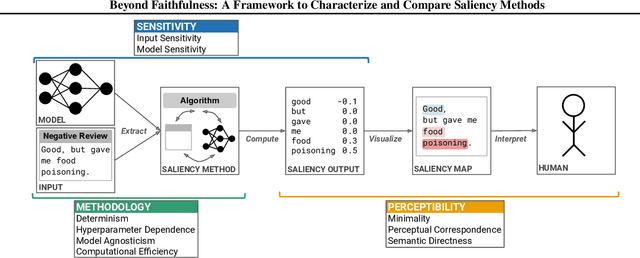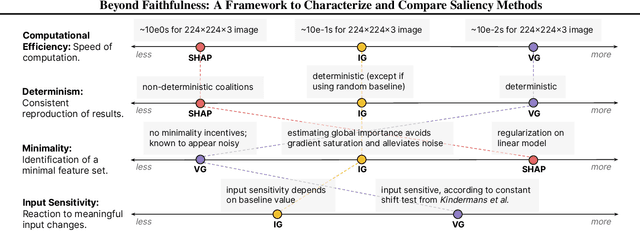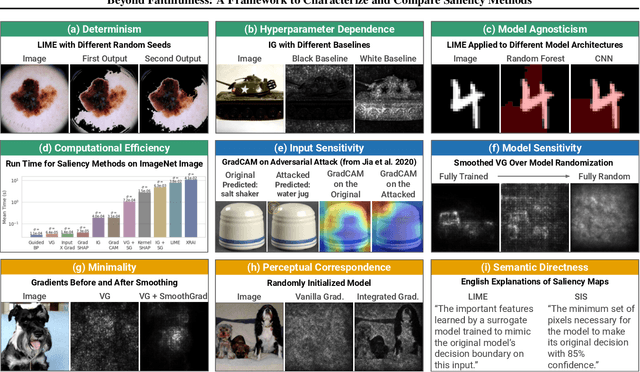Beyond Faithfulness: A Framework to Characterize and Compare Saliency Methods
Paper and Code
Jun 07, 2022



Saliency methods calculate how important each input feature is to a machine learning model's prediction, and are commonly used to understand model reasoning. "Faithfulness", or how fully and accurately the saliency output reflects the underlying model, is an oft-cited desideratum for these methods. However, explanation methods must necessarily sacrifice certain information in service of user-oriented goals such as simplicity. To that end, and akin to performance metrics, we frame saliency methods as abstractions: individual tools that provide insight into specific aspects of model behavior and entail tradeoffs. Using this framing, we describe a framework of nine dimensions to characterize and compare the properties of saliency methods. We group these dimensions into three categories that map to different phases of the interpretation process: methodology, or how the saliency is calculated; sensitivity, or relationships between the saliency result and the underlying model or input; and, perceptibility, or how a user interprets the result. As we show, these dimensions give us a granular vocabulary for describing and comparing saliency methods -- for instance, allowing us to develop "saliency cards" as a form of documentation, or helping downstream users understand tradeoffs and choose a method for a particular use case. Moreover, by situating existing saliency methods within this framework, we identify opportunities for future work, including filling gaps in the landscape and developing new evaluation metrics.
 Add to Chrome
Add to Chrome Add to Firefox
Add to Firefox Add to Edge
Add to Edge